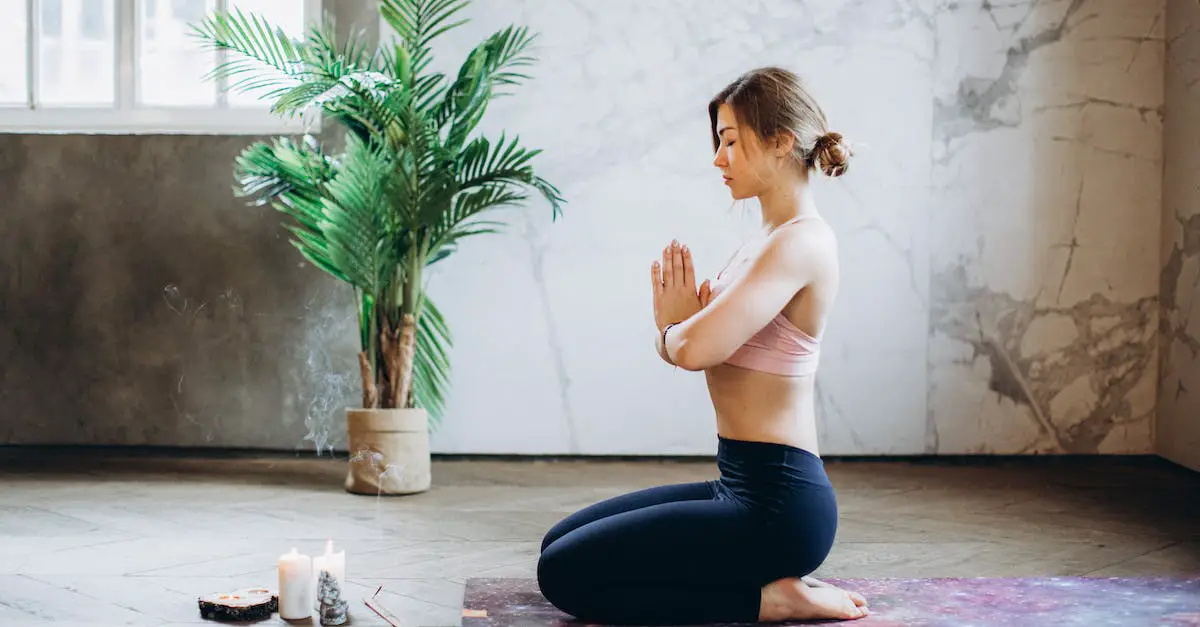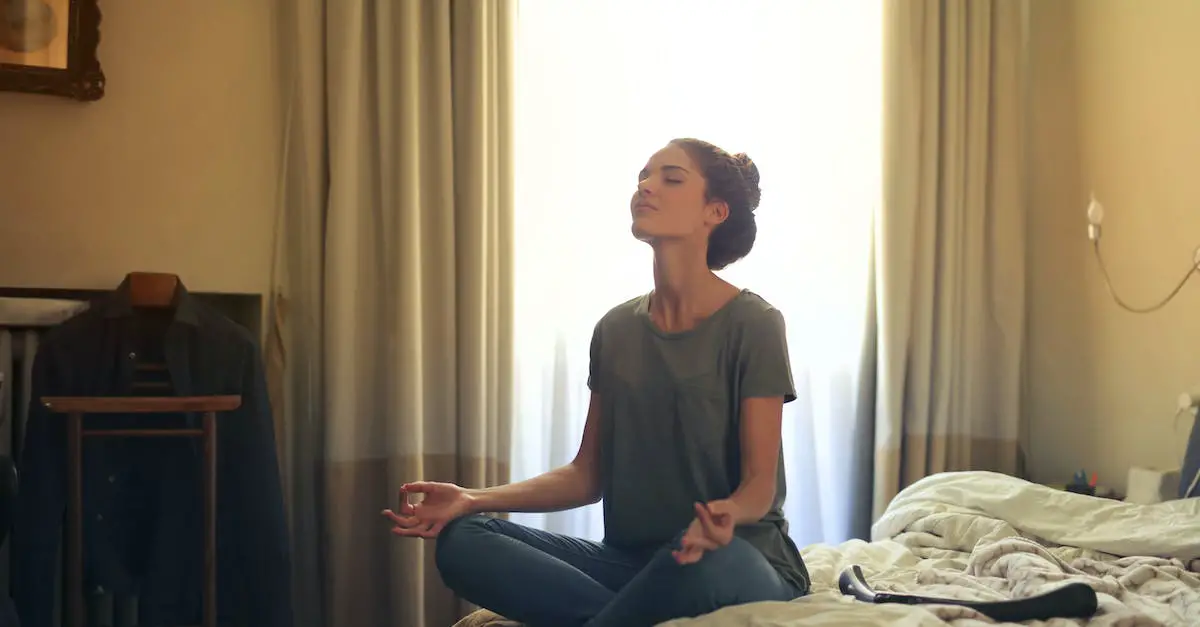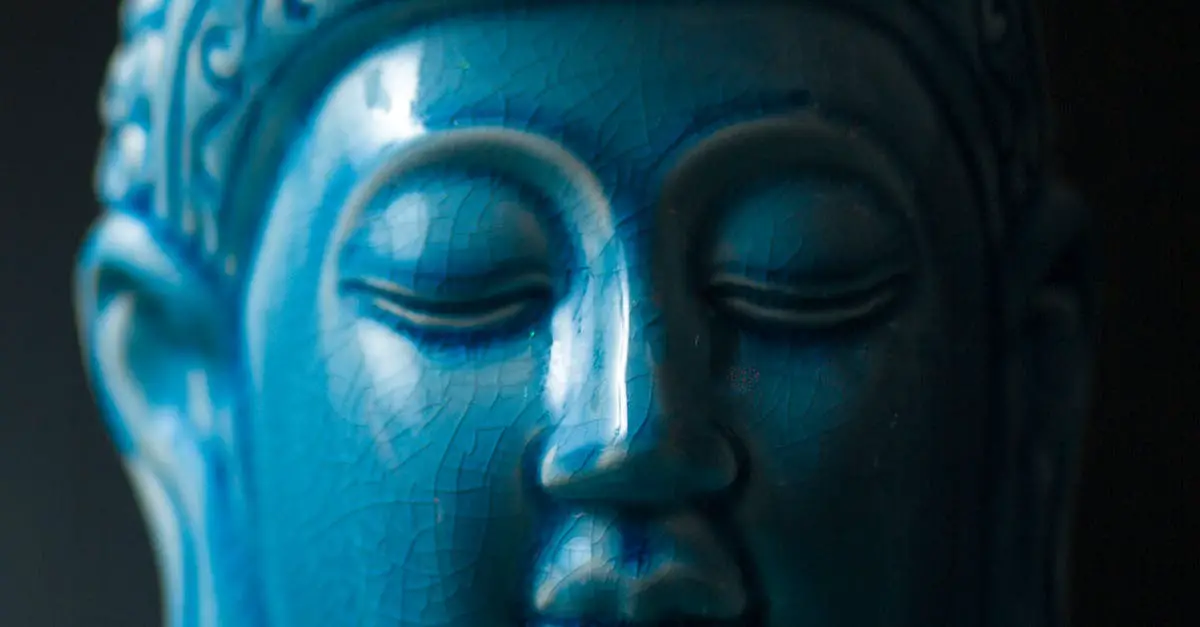Meditation is an excellent way to relax and unwind, but with today’s busy lifestyles, it can be hard to find the time to dedicate to regular practice.
Like many of us, you’ve probably thought about beginning a regular meditating routine but don’t know where to start.
Don’t despair – developing a home meditation practice doesn’t have to be a challenge.
Here are some tips to help get you started on a regular meditation schedule!
-

Celestial Soul Eco-Friendly Tote Bag
$18.50 Select options This product has multiple variants. The options may be chosen on the product page -

Celestial Soul Women’s T-Shirt
Price range: $20.00 through $21.50 Select options This product has multiple variants. The options may be chosen on the product page
1. Establishing a Set Time

Meditating at home can be daunting and very enjoyable — as long as you stay consistent. And an essential factor in that consistency is setting a specific time to meditate. So why not start your meditation journey the right way and set a time?
Think of it like brushing your teeth — it’s a non-negotiable. Making it a priority will help you eliminate any excuses. And it doesn’t have to be lengthy — even 10 minutes daily can make a huge difference. So you can try correlating your set time to a cue or event, like drinking your morning coffee. This will help solidify the habit and make it as automatic as possible.
Each morning or evening, pause for a few minutes and take that time yourself. Shut out distractions and make sure no one bothers you. If you have to, set a timer so that you know that you’re done at the end of the session and can start your day or wind down.
Take this opportunity to focus on your breath and put your awareness into guiding it with your intention. During these moments, practice meditating on your routine, and throughout your day, don’t forget to take a few short mindful breaks throughout it.
In establishing a set time for your meditation practice, you can also get creative and create a ritual around it. Maybe you make a cup of herbal tea beforehand or light incense. Maybe you practice with some music you love in the background. You can be creative and create a cozy environment that you look forward to every day.
The ritualistic aspect will make it easier for you to stay consistent with your meditation practice. It will anchor your set time, making it a priority in your day that you look forward to. And those 10 minutes of mindful presence can be the most precious 10 minutes of your day!
2. Establishing a Set Space

Have you ever heard the phrase, “just make your bed every morning, and life will be easier?” Well, the same philosophy applies to starting your meditation practice. Before you even begin meditating, you need a space to practice – preferably where you won’t be disturbed.
We all remember what our parents would tell us to get ready for the day – “Make your bed before you do anything else!” When it comes to establishing a set space for your home practice, it’s all “location, location, location.”
Some people prefer a more “zen” space to relax and disconnect, such as a dedicated yoga room with some of their favorite calming images, such as mountains, oceans, or trees. Other people prefer a more energizing space, with plenty of natural light and energizing ideas, turning their meditation room into their own personal “happy place.” It doesn’t matter – find a place that makes you comfortable when you close your eyes, take a deep breath, and just be.
When you eventually choose the perfect spot, take some time to make the space uniquely yours. Throw down that fluffy rug, hang up your favorite painting, or do whatever you can to make it your space. Add a few personal reflections or items that bring you comfort, helping signal that this is a special space for you. This is where you’ll become connected with yourself.
Another key element to establishing your meditation space is ensuring your environment feels safe. This can be done by adding soft pillows or a blanket to make it comfortable. Maybe some calming music or diffused aromatherapy to make the environment suitable for whatever you need that day. Once you’ve got the perfect setup and this place feels inviting, you can have the confidence that you have a safe space to retreat to no matter what arises in your meditation practice.
Your meditation space isn’t just about creating the perfect environment for your practice – setting it up and decorating it can help you stay mindful throughout the day. Next time you’re in your space, take a few minutes to enjoy the ambiance while in your body and be present.
So now that you’ve determined your space, it’s time to start shining some light on your purpose and make the most of it.
3. Establishing a Sitting Posture

Congratulations, you’ve chosen to embark on a quest to become an enlightened meditator! The next step on your journey is mastering the two key components of meditation: focus and posture. And the trick to mastering your yoga zen starts with the perfect sitting posture.
Not sure where to start? Don’t worry. You may find it somewhat challenging to get comfortable at first – especially if your body isn’t used to staying still for any length of time. But you can work with your body and mind to find a posture that works for you. Let’s break down the basics; you’ll be conquering your meditation game in no time.
- Position. First, consider the position you’ll be meditating in. Ideally, you’ll want to sit comfortably, keeping your head, neck, and spine aligned. You can sit on a chair or the floor or use a meditation cushion or bench. If you’re using a chair, ensure that your feet have something to rest on so your legs are not dangling in the air.
- Anchorage and Stabilization. When you’ve found the right posture, it’s time to anchor your body and stabilize it so it can be still. You can do this by slightly tightening your abdominal muscles, rolling your shoulders back and down, and engaging your core muscles and quads.
- Alignment and Rest. Now, you want to make sure you’re in proper alignment. Keeping your spinal column vertical ensures you can easily and effectively channel the energy needed to focus on your breath. Keep your hands in the ‘cosmic mudra’ position; rest either open on your lap, palms facing up, with the right hand resting on top of the left. Or, use the ‘jin shin Jitsu’ position, where your left index finger is touching your right thumb.
Finding the balance between comfort and alertness is the key to creating a successful sitting posture. Once you find that alignment, consciously relax your body from head to toe, using your breath as a guide.
As you continue to practice, your body will quickly adjust to the posture, and you’ll be ready to meditate like an expert!
4. Incorporating Pranayama

You’re well on your way to creating a beneficial home meditation practice, and it’s time to ramp it up with a powerful tool: Pranayama. Pranayama is a yogic practice involving conscious breath control for health and well-being.
If Pranayama sounds intimidating, let us ease your fears. This practice is incredibly simple; it takes a few practice rounds to master. Let’s dive in.
First and foremost, you need to find the proper posture. You can either sit lying down or in a chair with your spine erect and feet flat on the floor. Feel free to use a pillow or blanket to prop yourself up as long as you can comfortably keep your spine erect.
Curl your middle, ring, and pinky fingers lightly, leaving only your first two fingers slightly extended. Gently press your thumb and index fingers against your pointer finger. This forms a loop, which will help you practice the various breathing techniques involved with Pranayama.
The next step is to start playing around with your breath. Shift your focus to your nose and be mindful of your inhales and exhales. Inhale through your nose, and exhale through your mouth. You can also count inhales if it helps you stay focused.
Another variation to play with involves counting each exhale. This is great for calming the mind, and you can always start with a count of four and work your way up from there. The point is to practice controlling the breath, which is what Pranayama is about.
Finally, work your way up to an Ujjayi breath. This will help you further refine your breath and assist with the energy flow in your body. Simply take a deep inhale, and then close your mouth. Take a conscious exhale through your nose as if you’re fogging up a mirror, but you’ll keep your throat closed. It should sound like the waves of the ocean.
You can also add a mantra to your Pranayama practice. Use any one-syllable mantra you’d like and repeat it silently as you breathe. This is a great way to expand the practice and optimize your meditation.
Incorporating Pranayama into your home meditation practice can help you reap its incredible benefits for even greater health and well-being. So, take some time to practice incorporating it into your sessions and feel the power of your powerful breaths.
5. Choosing a Meditation Technique

Choosing the right meditation technique is key to your success in developing a home practice. And there are lots to choose from! But don’t let the options overwhelm you – we’ve narrowed it down to a few of the most popular and effective meditation techniques.
Are you a visual person? Try yoga or guided visualization meditation. This meditation allows you to use your imagination to create stimulating mental imagery, helping reduce stress and anxiety. To get started, find a comfortable seated position and focus on breathing while imagining yourself relaxing in a serene environment.
For a more sensory approach, try mantra meditation. Choose a word or phrase that resonates with you and recite it repeatedly in your mind. This can help you to cultivate mindfulness and get your creative juices flowing.
Maybe you’re looking for an activity that can be done in a group or with a partner. Give Tantra Meditation a try! This meditation focuses on the energy within each of us, allowing us to achieve a strong sense of harmony. Having a friend or two practice with you can be helpful, as two minds can be more powerful than one.
Are you looking for something more energetic? Try Trataka Meditation by focusing on a single object with your eyes open or closed. This can help you to stay mindful and bring balance to your emotions.
Finally, practice mindfulness meditation if you’d like to experience blissful stillness. This is where you focus on the present moment without judgment or attachment to the thoughts that arise. This meditation takes practice and patience, but it can be incredibly rewarding if done correctly.
Finding the right meditation technique for you is the key to developing a successful home practice. Experiment with different types until you find one that makes you feel at peace, and then stick with it. You’ll be feeling tranquil in no time!
6. Deciding on a Length of Time

Now that you’re getting comfortable with your home meditation practice, it’s time to decide on the best time. Sure, some people find five minutes is enough, but a few more minutes may be beneficial if you’re starting.
Try experimenting with the length of your practice and find something that resonates with you. You’ll know it’s the right time when you can’t wait to start your meditation.
Don’t rush your decision; you should take time to find the right length that works for you without feeling overwhelmed. A good starting point is a five to 10-minute practice, where you can sit comfortably, focus on your breath, and feel all emotions slowly drift away.
If you don’t want to feel rushed, a 15 or 20-minute practice could be more up your street. Allocate those extra few minutes to getting in the zone, counting your breaths, and truly appreciating the silence.
The great thing about your practice is that you can work up to longer meditations when ready. There’s no rush, think of it as the perfect mental workout that the long meditation would provide.
And there you have it! Now that you know the time frame you’re going to settle on, it’s time to decide on the type of meditation practice that suits you best.
7. Developing a Spiritual Practice

Now that you have mastered meditation basics let’s tackle the more advanced technique – developing a spiritual practice. This is a time to dive deep into your soul and tap into the divine realm.
For starters, set aside some time each day to spend in spiritual practice. This could be at the same time as your regular meditation practice or at a different time. It’s important to differentiate between the two activities, as the spiritual practice is a bit more involved.
Once you’ve decided on the time, pick a location that feels peaceful and safe – outdoors or indoors, it’s up to you. You could even incorporate walking meditation into your spiritual practice.
Once you locate your spot, take some deep breaths and relax deeply. Visualize a white light starting from the ground and enveloping your body. Feel yourself relaxing even more in the white light. Let yourself be open to any energy or insights that may come through.
Next, you could deep dive into your meditations using mantras, japa mala (108 beads), or visualization exercises. Feel free to explore different techniques until you find what resonates with you. Connect with your inner being and explore any insights or wisdom. Let your spiritual practice be an exploration of your soul and its capabilities.
Finally, set your intentions on what you would like to gain from your spiritual practice. Visualize yourself surrounded by the energies of God or the divine, and set those intentions. You can use mantras, visualization, or affirmations to set your intentions.
Once you’re done, take some time to feel into the changes. Be open to any new insight or understanding that may arise.
Every spiritual practice session is different and unique, so be gentle and loving with yourself as you walk this path. Developing a spiritual practice can bring your meditation to uplifting new heights – let yourself be open to the change it brings. Good luck!
Conclusion
Meditating at home can be an incredibly rewarding experience and can offer a sense of calm and clarity in an otherwise busy and chaotic world. From cultivating a comfortable environment, understanding the benefits, and learning the right techniques, meditating at home can be a great way to benefit your mental and physical health. It doesn’t matter if you’re a beginner or a practitioner—with the right tools and tips, you’re sure to find a home meditation practice that works for you.
Ready to get started? Now that you’ve got all the know-how, there’s nothing to stop you—so take a deep breath, keep your motivation steady, and focus on the journey, and you’ll be ready to reap the rewards of a comfortable, effective home meditation practice.
References:
- https://weeklystoic.com/home-meditation/
- https://bigthink.com/mind-brain/establishing-daily-meditation-practice
- Long, Jennifer. 2018. DEC News: ‘Just make your bed,’ is best advice for developing daily home practice. Duke Health News. Available at https://news.duke.edu/2018/02/1-make-bed-best-advice-developing-daily-meditation-practice
- https://yoga.com/article/meditation-tips-for-beginners-how-to-start-a-meditation-practice
- https://yogainternational.com/article/view/breathing-based-meditation-ujjayi-pranayama
- https://www.yogajournal.com/meditation/mantra-meditation
- Benedetti, S (2020). What’s the Difference Between Meditation and a Spiritual Practice? Retrieved from: https://www.gaia.com/article/difference-between-meditation-spiritual-practice
- Yates, C (2020). How to Develop a Spiritual Practice. Retrieved from https://www.oprahdaily.com/living/a31372583/how-to-develop-a-spiritual-practice/

